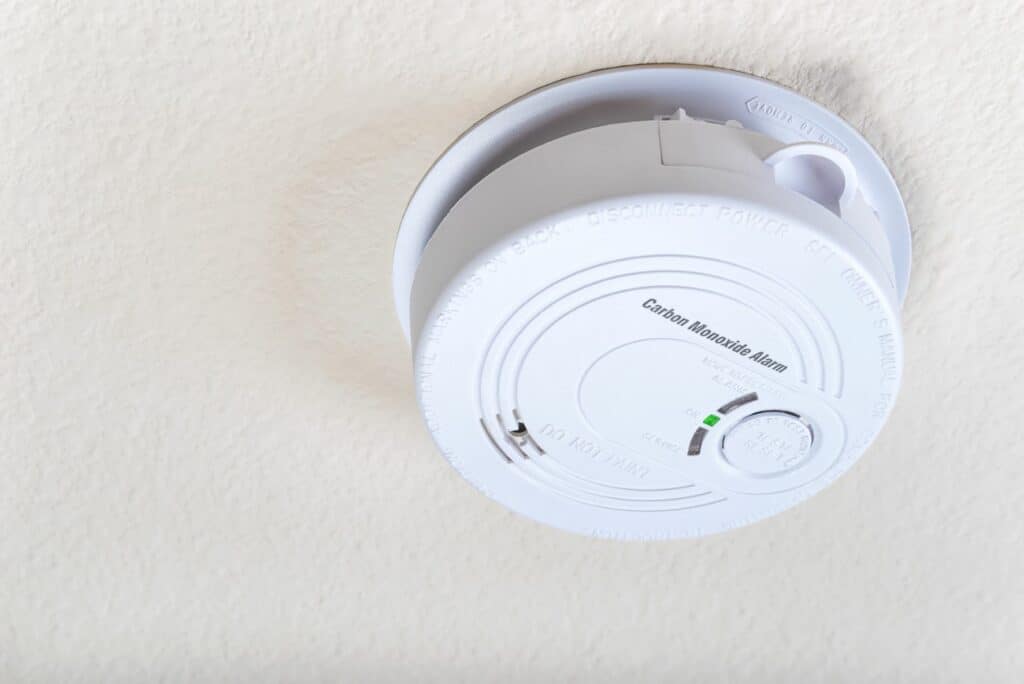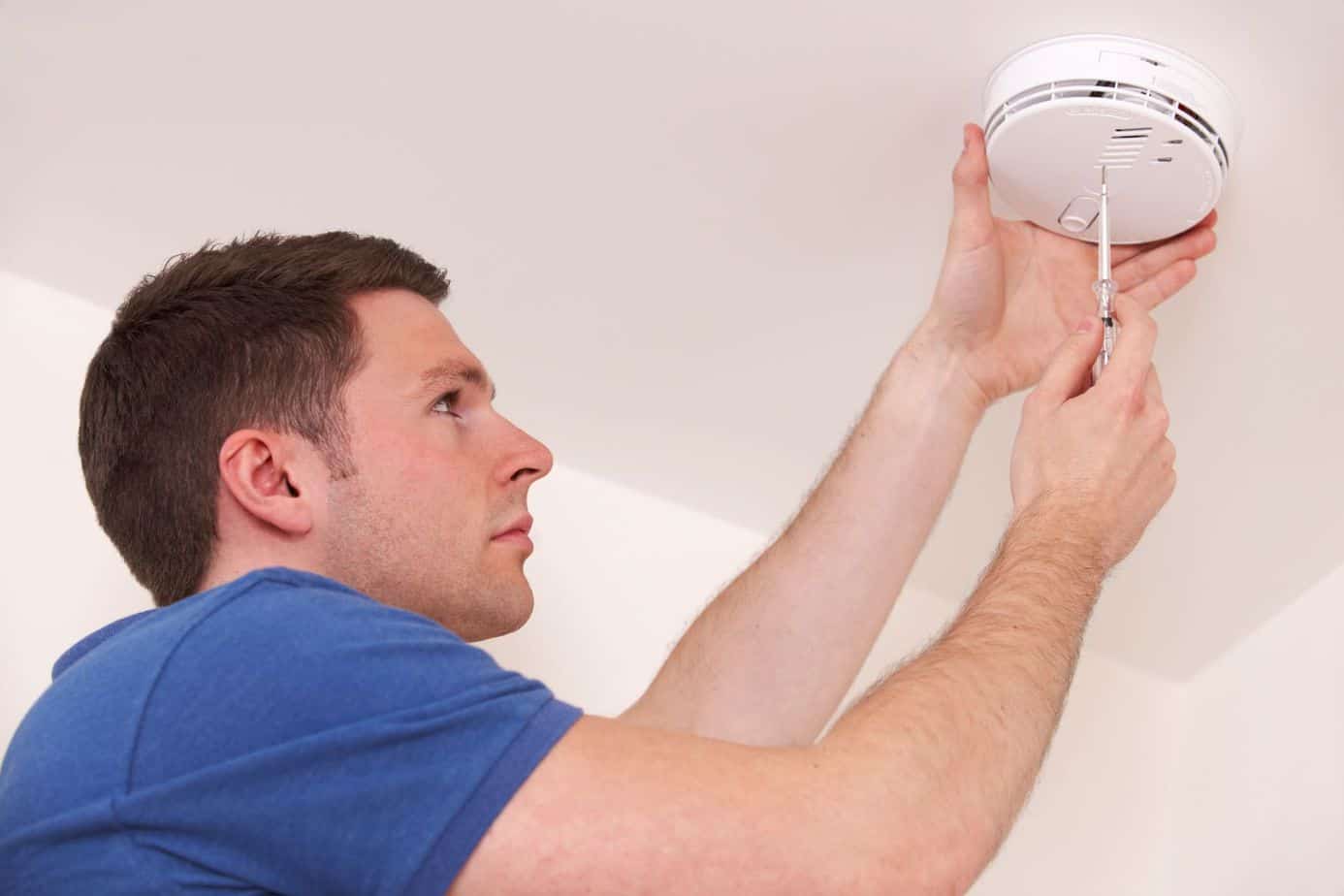Your RV carbon monoxide detector might be responding to the presence of the deadly gas carbon monoxide. Unless you have good reason to believe the alarm isn’t genuine, take immediate and appropriate action. There are several other reasons why your detector might keep beeping, but all of them indicate a need for action.
Never ignore a beeping carbon monoxide detector. They’re recommended in RVs for excellent reasons and may well save your life. Our quick and simple guide tells you more about the main reasons that your RC carbon monoxide detector might keep beeping.
Why does my RV carbon monoxide detector keep beeping?
There are several possible answers to the question, “why does my RV carbon monoxide detector keep beeping?”. Along with our article, make sure you read the specific instruction manual which came with your detector.
Carbon Monoxide is present in your RV.
Unless you have established otherwise, you should always treat unexpected beeping from your carbon monoxide detector as a genuine alarm. Usually, this beeping will be very loud (e.g., 85 decibels) and persistent, perhaps accompanied by a flashing light.
If you hear this alarm, get everyone out of the RV immediately, open windows and doors, and call the emergency services if necessary. (Keep reading further down this article for more detailed advice.)
Another gas or vapor has triggered the alarm.
Hydrogen gas (e.g., lead-acid batteries), steam from an iron or kettle, or other gases could have triggered the alarm.
Batteries are low.
It is common for carbon monoxide detectors to emit shorter, softer chirping beeps every 15-30 seconds when the batteries are running low and need to be recharged or replaced.
The detector has a fault.
If there is a fault in the carbon monoxide detector circuitry due to damage or age, you may hear a very similar chirping beep to the low battery alarm every 15-30 seconds. This is to alert you that the detector needs to be replaced.
The detector is dusty.
If the outside of the carbon monoxide detector is particularly dirty, this could cause it to beep. Dust regularly and wipe the casing gently with a slightly damp cloth.
What is carbon monoxide?
Carbon monoxide is a highly poisonous gas that can kill people of all ages and states of health. It is invisible, odorless, and otherwise undetectable through human senses. This is why we need carbon monoxide devices to alert us early when carbon monoxide is in our vicinity.
Carbon monoxide is produced when carbon fuels, such as gas, wood, coal, and oil, burn incompletely. This commonly occurs with poorly ventilated appliances and engines. When these are contained in enclosed or tightly sealed spaces, such as a garage or RV, carbon monoxide can accumulate to a dangerous level.
Why is carbon monoxide dangerous?
When carbon monoxide is inhaled, it is absorbed by the lungs and enters the bloodstream, binding to red blood cells faster than oxygen, the gas we need to live. Once bound to a carbon monoxide molecule, the red blood cells become unavailable to carry oxygen to organs and tissues around the body.
Carbon monoxide concentration is measured in parts per million (ppm). When concentrations are below 70 ppm, most healthy people will not experience any symptoms. As carbon monoxide levels rise above 70 ppm, health is affected. Sustained concentrations above 150-200 ppm could prove fatal.
At lower levels of carbon monoxide, people may feel sick, dizzy, or weak. If blood concentrations of carbon monoxide rise further, people could lose consciousness and be severely brain-damaged or die through oxygen deprivation. If someone is asleep or intoxicated, they could die from carbon monoxide poisoning without experiencing warning symptoms.
Over 430 people every year die from accidental carbon monoxide poisoning in the USA, with a further approximately 50,000 visiting accidents and emergency room visits after exposure to carbon monoxide gas. Carbon monoxide may pose an especially significant risk for unborn babies, children, older adults, and those with chronic heart disease.

How do RV carbon monoxide detectors work?
Carbon monoxide detectors work through the interaction of several key components, including:
- a silicon microchip fused to an integrated electronic circuit panel,
- light-emitting diode (LED) lights to give visual indications of activity,
- sometimes an LCD panel that will show CO levels,
- battery or wiring to connect to an electrical system,
- test and reset button/s,
- A carbon monoxide sensor inside a detection chamber may be a biomimetic sensor or a metal oxide semiconductor sensor.
While carbon monoxide sensors can be very sensitive, modern detectors are not as susceptible to false alarms as earlier models.
In some cases, a carbon monoxide detector can also beep in response to steam or hydrogen gas (produced when charging a lead-acid battery). Install your carbon monoxide detector in a well-ventilated location and minimize the risk of these triggers.
What should I do when my RV carbon monoxide detector beeps?
When your RV carbon monoxide detector beeps, you should never ignore it, even if you suspect there is an innocent explanation.
First, open windows and doors for ventilation and make sure you and any other people or pets in the RV leave the vehicle immediately. If the engine, a generator, or any other fuel-burning appliance is running, turn them off.
Seek medical attention if anyone who was in the RV has symptoms of carbon monoxide poisoning.
If you believe that the carbon monoxide alert was a genuine alarm,
If everyone appears healthy, you can re-enter the RV and check the carbon monoxide detector once the vehicle has been thoroughly aired out.
How can I stay safe from carbon monoxide?
Installing carbon monoxide detectors is an essential part of staying safe from carbon monoxide. Still, it is never a substitute for the proper use and regular maintenance of fuel-burning appliances. It’s also vital to use and maintain your detector in line with manufacturer instructions. These will generally include the following guidance:
- Install a carbon monoxide detector that meets UL 2034 safety standard requirements.
- Place detectors near the sleeping area in your RV.
- Check the batteries in your detector at least twice a year.
- Test the circuitry in the carbon monoxide alarm regularly, using the test button and user instructions.
- Keep an eye on the age and expiry date of your carbon monoxide detector. Detectors will have a recommended replacement age and should not be used beyond this date.
- Make sure you know the difference between the low battery alert and the carbon monoxide alarm.
Never run the engine of your RV or another vehicle in an enclosed space where carbon monoxide could accumulate, and make sure that generators and other fuel-burning appliances for your RV are well ventilated. Only use fuel-burning appliances in line with user instructions and under the supervision of a wide-awake adult.
Leave the RV if the alarm beeps and call the fire department or 911 for assistance. Do not re-enter the vehicle until thoroughly ventilated and evaluated, with any faulty appliances fixed.
Conclusion
Why does my RV carbon monoxide detector keep beeping? It could be a low battery, a defect, or age, but it could also be a genuine carbon monoxide emergency. If you’re unsure, always err on the side of caution when dealing with possible carbon monoxide.
Don’t forget to check out our Recommended RV Equipment list!
Get a FREE copy of the Go Together Go Far Travel Trailer Hookup and Disconnect Checklist when you sign up for the Go Together Go Far Newsletter!
Want to learn more about different types of RVs? Check out:
- Best Off-Road Camper Trailer Under $10,000
- Best Bunkhouse Travel Trailer Under 30 Feet
- Are Lance Travel Trailers Any Good?
- Do Rope Lights Deter Rodents?
- What Are the Best Names in the RV Industry?
- 3 Best Travel Trailers for Family of Four
- Blue Ox SwayPro Basics: Top Questions Answered
- Adding A Washer Dryer To Travel Trailer? What You Need To Know.
- Best Drone For Camping, Backpacking, and RVing: A Complete Guide to Drones for RVers
- Furniture and RVs – How To Get It Through the Door…
- How To Get Rid Of A Poop Pyramid In RV Black Tank
- Do You Know How Long To Keep Fresh Water In RV Tank Storage?
- What Is The Best Outdoor Security Camera System For Your RV?
- RV Bumper Mount Grills: 5 Best Options For Your RV Or Camper
- Best Electric Tankless Water Heater for Your RV. What You Need To Know
- Read Before You Buy! How to Find the Best Scooter for RV Camping
- 3 Best Travel Trailers for Family of Four
- Top RV Brands: What Are the Best Names in the RV Industry?
- Lance Campers: What Makes Them So Different?
- Best Bunkhouse Travel Trailer Under 30 Feet
- Best Off-Road Camper Trailer Under $10,000
- Best Weight Distribution Hitch With Sway Control For Travel Trailers in 2022
- What Are The Best Built Travel Trailers? Things To Consider.
- How Does An RV Refrigerator Work? A Quick Guide.
- Why Does My RV Carbon Monoxide Detector Keep Beeping? A Quick Guide.
- Where Is The Power Converter In My RV Or Travel Trailer
- What is the Best Generator for 50 Amp RV?
- Wireless RV Security Camera Systems: Is Solar Powered Security Without Wi-Fi An Option?
- Best Portable Air Conditioner for Camping for 2022
- How to Find the Best 3500 Watt Inverter Generator for RV Camping
- Best Propane Generator For Your RV: Read This Before You Buy!

